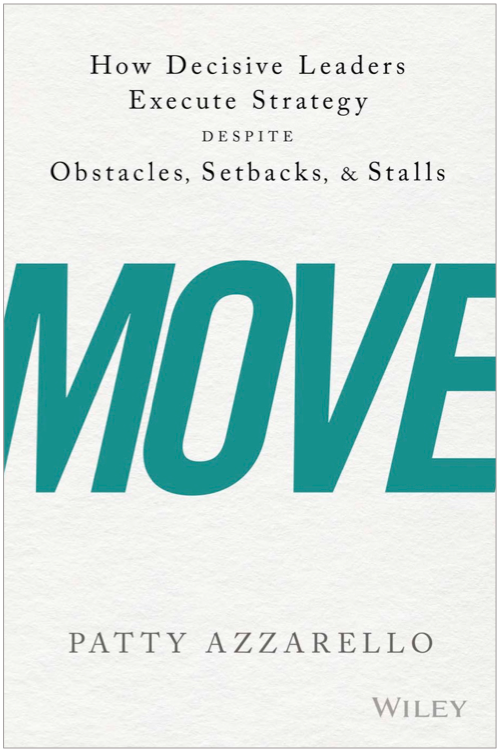
As a leader, it’s your job to deal with high level issues: strategies, abstractions, and financial models. But if you spend all your time at that level, you can lose touch with reality.
You get insulated from what is actually happening where the products and the services meet reality — where they meet the humans who build, sell, service, buy and use them.
But if you can stay grounded in reality, you will avoid nasty surprises, realize more opportunities, and be more successful at implementing an even better strategy.
Build in Time to Listen
The best way to stay connected is to do it on purpose and build time in your schedule to listen.
Not only will you be smarter, but your people will see you as “getting it”, which helps keep them motivated and focused on things that really matter.
Here are some examples of what to listen for and how to do it:
1. Listen to understand what business you are really in.
I find that I can sit back at headquarters and imagine I am in any business I want to be in.
That façade is shattered as soon as I go on a sales call. Not because of what the customer tells me, but because of what the sales rep tells me in the drive to and from the client meeting.
When you get stuck in traffic with a sales rep you learn about what is really working and not working, both in terms of how you try and sell what you do, and what you actually deliver.
You learn what your competition doing with your specific customers, and what the local channel, service, and sales partners are doing to help or hurt your business.
One time I learned that my own consulting organization was preventing my sales organization from closing business because they had conflicting incentives. You just don’t see those things as clearly back at HQ.
If you never take the time to hang out with sales and service people, and understand what is working well, and what makes their life hard, you miss a huge opportunity to find ways to reduce risk and grow your business.
You get much better at strategy in the conference rooms when you take the time to see it in action in the real world.
2. Listen to know what customers actually like and don’t like about you.
Watch your customers use your product, ask them to tell you what they think it’s for, and what it is most useful for. More often than not, the most important things will not be the ones you are thinking and saying they are.
I ran development once for a software product that was so hard to install, it was embarrassing. For months, the task to fix it always seemed to be a low priority for the engineers. So I had a handful of engineers go out to customers with the sales team and personally participate in the install. They became so personally embarrassed the install was fixed in a week.
One time I learned that the reason my product was at a competitive disadvantage was because it arrived at the distribution center in one big box full of little boxes that all had bar codes on them. The competitor’s product arrived in one big box with 20 bar code labels on the outside of the box. Here I was thinking that the greatness of our product was the important thing!
You will get insights to make enhancements and cut costs you would never have thought of, without listening directly to what customers are experiencing and what they care about.
3. Spend time in your customer support center.
There is nothing like working a shift on the customer support line. Take the calls personally or listen in. You will find that customers struggle with things you never would have thought of, and find small changes that reduce your call volume and increase customer satisfaction dramatically.
One business realized that a vast majority of people were calling to make sure that their online order was received. After the CEO spent a day on the customer service line, they were able to make a small change to their online order confirmation process and reduce their call load by more than half overnight.
More often than not, it isn’t the core of your products that irritate your customers, it’s the stuff that happens around the edges. You need to listen to find out.
4. Learn if what you think you are doing is happening.
There is a big difference in rolling out a strategy and having your organization actually do it.
You can get all the right answers from your management team, and still not have the right priorities being acted on where it counts by the people who build sell, and support it.
I look for ways to test what is actually happening. For example, when my organization decided to re-position a product line, a few months after the rollout, I called customers I knew in different parts of the world and asked them what the local sales teams were telling them about our strategy.
If it was the old stuff, I knew I hadn’t done a good enough job getting the strategy executed. Don’t assume things stick until you test them.
5. Listen to stop doing stupid stuff
All organizations are screwed up to some extent. So is yours. If you think it’s not, it’s probably because you are not listening enough!
I always built time in my schedule to listen. It could be as much as having 100 1-1 meetings over a course of a few weeks, when I needed to jump in and do a turn around. In more of steady state growing business I would regularly schedule breakfast or lunch sessions with groups of people, or dedicate 4 hours a week to talk with individuals in the business.
If you make it a point to talk to people at all levels of the organization, you find out that you are doing a lot of stupid stuff.
You might find groups of people with competing efforts. You may find people putting great effort to support a product no one is selling, or you are investing in equally in products that have wildly different revenue potential, becasue no one knew what to stop doing.
And you will typically will find wonderfully talented people who are buried beneath weak managers.
You won’t know if you don’t build in time to listen. Once you learn, you can start to optimize.
6. Listen to thank and recognize people
I find even if it is my best intention to thank and recognize work well done, the biggest problem is simply missing when good stuff happens.
This is not just a large organization thing. I have seen this in small groups of 5-10 people, where someone can do something heroic, and if the manager was out that day, it goes completely unnoticed.
The trick is to put a process in place to make sure that people across the organization are feeding you good news about what individuals do. I let my team know that I want and expect to hear about work that should be recognized, and I promise to call the person, or write a note within 24hours of being notifed.
Once you put this request out there, it gains momentum. You get good news, and you don’t miss opportunities to thank people.
What can you do?
You don’t need to be a CEO or a general manger to benefit from getting and staying connected to reality. We all have lots of activities that fill up our day, and insulate us from the reality of our business.
Talk to a sales rep or a service rep once a month, go on twitter and search for your product name, order your product and try to return it. The most valuable information you can contribute to your business is to be the voice of what is really happening.
WANT BLOG UPDATES SENT TO YOU?
Subscribe here for email or RSS updates.


